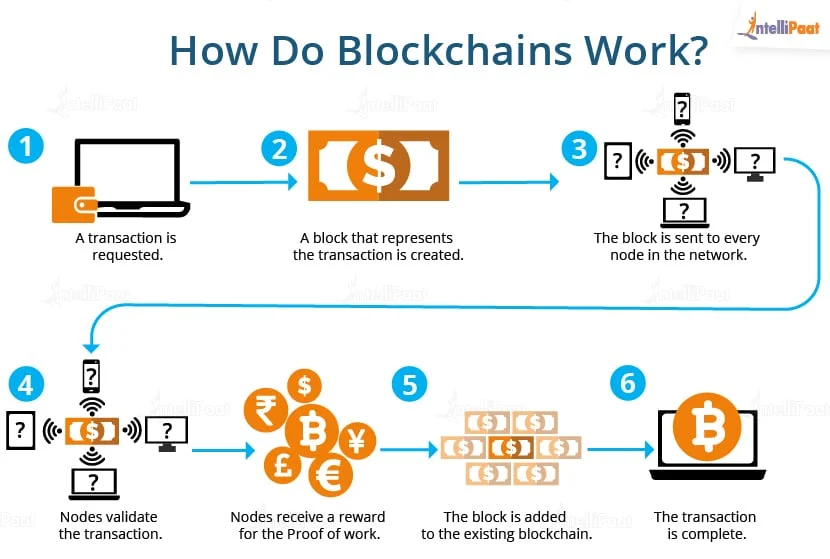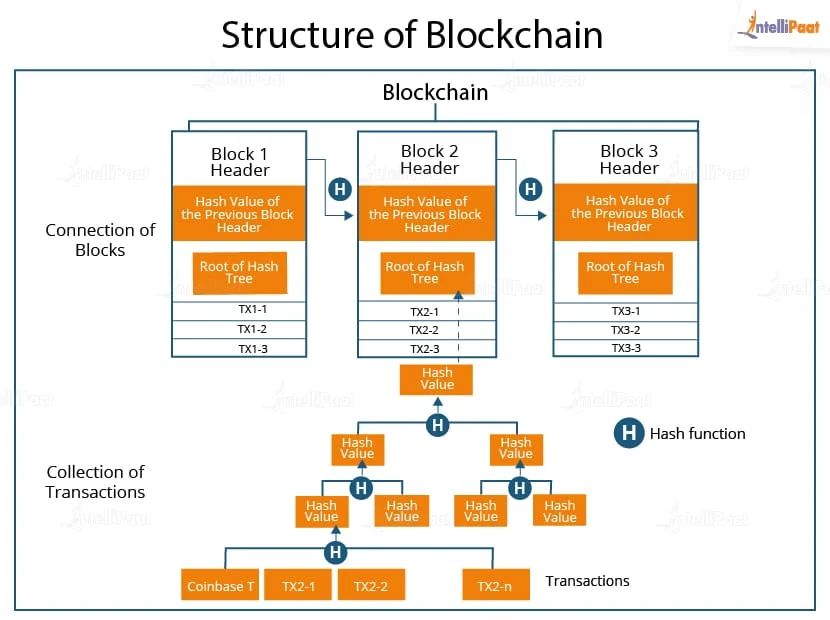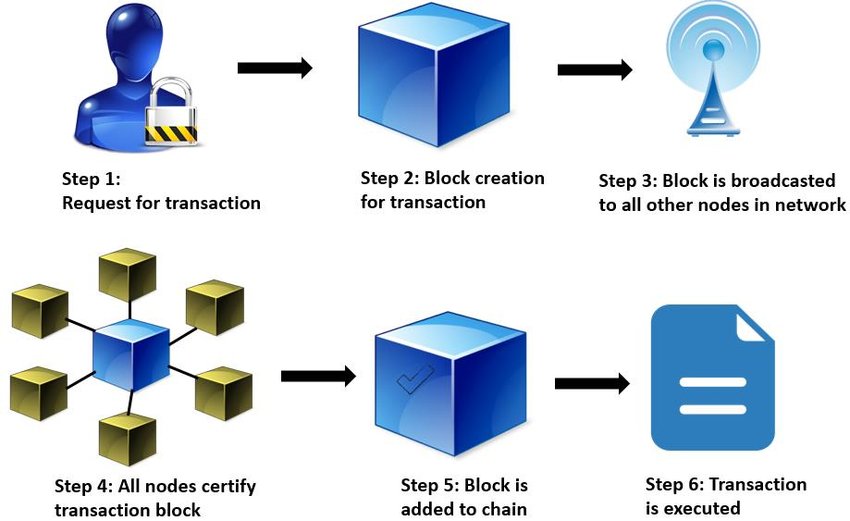Introduction
Blockchain is revolutionizing industries by enabling secure, transparent, and decentralized record-keeping. But how does it actually work? This article provides a detailed, structured breakdown of blockchain’s underlying mechanisms, from transactions to consensus algorithms, making it suitable for academic and professional audiences.

1. The Basic Structure of a Blockchain
A blockchain is a chain of blocks, where each block contains:
- Transaction data (e.g., sender, receiver, amount).
- A cryptographic hash (a unique digital fingerprint of the block).
- The previous block’s hash (linking blocks in chronological order).
This structure ensures:
✅ Immutability – Once data is recorded, it cannot be altered.
✅ Transparency – All transactions are publicly verifiable.
✅ Security – Tampering requires changing all subsequent blocks, which is computationally infeasible.

2. Step-by-Step: How a Transaction is Processed
Step 1: Transaction Initiation
- A user requests a transaction (e.g., sending cryptocurrency).
- The transaction is broadcast to a peer-to-peer (P2P) network of nodes (computers).
Step 2: Transaction Validation
- Nodes verify the transaction using consensus mechanisms (e.g., Proof of Work, Proof of Stake).
- Checks include:
- Digital signature (proof of ownership).
- Sufficient funds (no double-spending).
Step 3: Block Formation
- Valid transactions are grouped into a block.
- The block is given a unique hash (using algorithms like SHA-256).
Step 4: Block Addition to the Chain
- The new block is linked to the previous one via its hash.
- The updated blockchain is distributed across the network.

3. Key Mechanisms That Make Blockchain Secure
A. Cryptographic Hashing
- Each block has a unique hash generated from its data.
- Changing any data alters the hash, breaking the chain.
B. Consensus Algorithms (How Agreement is Reached)
| Algorithm | How It Works | Example Blockchains |
|---|---|---|
| Proof of Work (PoW) | Miners solve complex puzzles to validate blocks. | Bitcoin, Litecoin |
| Proof of Stake (PoS) | Validators are chosen based on coins staked. | Ethereum 2.0, Cardano |
| Delegated PoS (DPoS) | Stakeholders vote for delegates to validate. | EOS, Tron |
| Byzantine Fault Tolerance (BFT) | Nodes must agree on transaction validity. | Ripple, Stellar |
C. Decentralization & Node Participation
- No single entity controls the blockchain.
- Nodes maintain copies of the ledger, ensuring no single point of failure.
4. Real-World Blockchain Applications
A. Cryptocurrencies (Digital Money)
- Bitcoin: Decentralized peer-to-peer cash.
- Ethereum: Smart contracts & decentralized apps (DApps).
B. Smart Contracts (Self-Executing Agreements)
- Automate processes (e.g., insurance payouts, supply chain tracking).
- Used in DeFi (Decentralized Finance).
C. Supply Chain Transparency
- Track products from origin to consumer (e.g., Walmart’s food safety system).
D. Digital Identity & Voting
- Secure, tamper-proof identity verification.
- Prevents election fraud via blockchain-based voting.
5. Challenges & Limitations
- Scalability – Bitcoin processes ~7 transactions/second vs. Visa’s 24,000.
- Energy Consumption – PoW mining uses massive electricity (e.g., Bitcoin’s carbon footprint).
- Regulation – Governments struggle to classify crypto assets.
6. Why Understanding Blockchain Matters
- Career Opportunities – High demand for blockchain developers, auditors, and analysts.
- Academic Research – New consensus models, privacy solutions (ZK-Proofs), and scalability fixes (sharding).
- Business Innovation – Companies use blockchain for fraud prevention and efficiency.
Conclusion
Blockchain’s power lies in its decentralized, secure, and transparent nature. By combining cryptography, consensus algorithms, and peer-to-peer networking, it eliminates the need for intermediaries. While challenges like scalability remain, blockchain’s potential in finance, governance, and beyond is undeniable.

